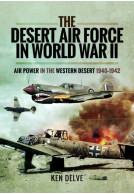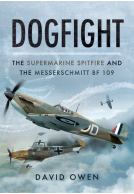History of Air-to-Air Refuelling (ePub)
Imprint: Pen & Sword Aviation
File Size: 11.1 MB (.epub)
Pages: 352
ISBN: 9781783460281
Published: 30th September 2005
| Other formats available - Buy the Hardback and get the eBook for free! | Price |
|---|---|
| History of Air-to-Air Refuelling Hardback Add to Basket | £29.99 |
This is a unique account of the development and operational use of air-to-air flight refuelling since its early beginnings in the USA and the UK to the equipment that is in use today. The author draws upon his life-long career as senior design engineer with the successful British company In-Flight Refuelling who were responsible for the development of the hose and drogue technique now preferred by many of the world's air forces. The story begins in the early 1920s when the art of air refuelling was part of the Barn Storming record-breaking attempts that were popular in the USA. It continues into the late thirties when successful experiments were made by Sir Alan Cobham using the Handley-Page Harrow, Short Empire and Armstrong-Whitworth Whitley aircraft. Amazingly, apart from the enthusiasm of Squadron Leader Atcherley (later to become Air-Vice Marshal), the Royal Air Force were not interested in pursuing this great technical advantage during World War II and it was the USAAF who requested the British invention to experiment with on their B-17s and B-24s; eventually enabling them to carry out retaliatory bombing raids on Tokyo after the attack on Pearl Harbor. Despite successful post-war trials with British civilian airlines it was again the Americans who placed an order with In-Flight Refuelling to equip their B-29s and B-50s. The Korean War saw extended use of operational air-to-air refuelling for the first time and now the 'tanker fleet' is an essential unit in major air-forces around the world.
Starting at the beginning, Tanner presents the origins of in-flight refueling and traces its 1923-1993 development from American barnstormer's stunt to widespread operational service. He presents a thorough account of how requirements came to be identified, and how through trial and error solutions were developed. His own employer, Sir Alan Cobham, was a pioneer in the field and, being a renowned long-dstance flyer, was one of the first in England to grasp the importance of in-flight refueling versus having to stage fuel supplies on land ahead of the trip. Over time, his firm would be instrumental in the invention of the probe and drogue system that, along with the boom system, became the prevailing technology. At this point an automobile connection begs to be made. When Cobham started experimenting in 1932 someone else had already taken similar initiative:
SpeedReaders
Mildred (aka Mrs. Victor) Bruce, the British racing motorist, speedboat racer, aviatrix and businesswoman. With only 40 hours of flying experience she decided in 1930 to best the world endurance record and had the foresight to buy herself a tanker plane from which to refuel her Bristol Fighter in flight.
Tanner covers the various methods of connecting tanker to reciever, types of modifications to either aircraft, and technical and safety issues.
Many photos and drawing illustrate procedures and lots of technical drawings and cutaways show operating principles and internal arrangements.
If the topic of aerial transfer interests you do know that there is also the relatively new field of mid-air rearming, presently stymied by financial and technological problems.
this is one of a very few books on this subject.It is an excellent book with a lot of detailed information,though the only drawback is it sometime reads like a technical manual.I hope the author writes an on further topics such as the Omega tanker project
Richard Cotton















